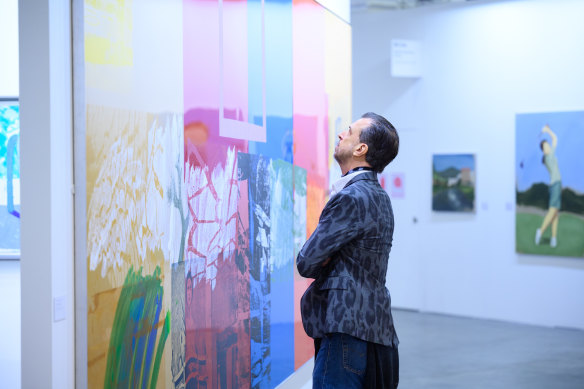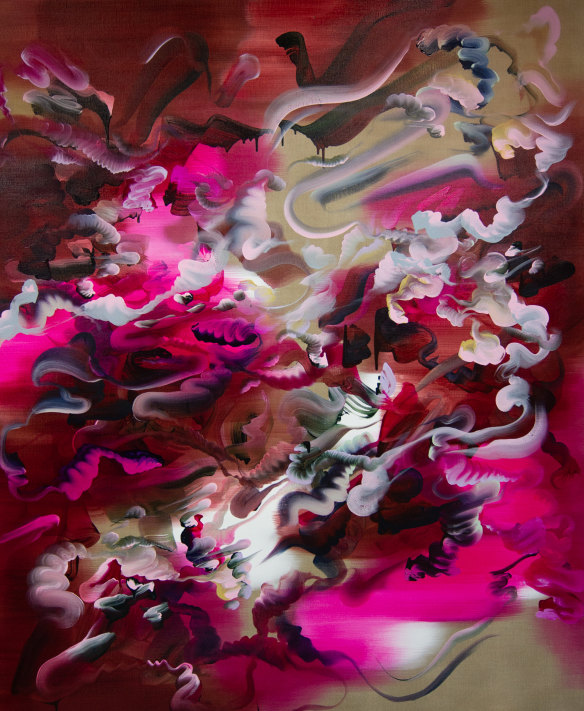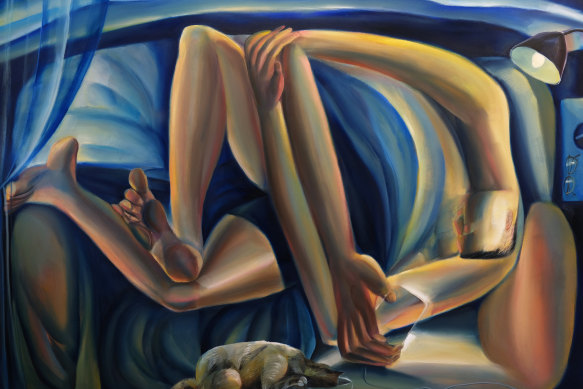The great rivalry that will shape the art markets of the future
Visitors to the new Singapore Art Fair were greeted by a large Robert Indiana sculpture spelling out the word “LOVE”. It was an invitation to locals and visitors to share a love of contemporary art that has struggled to take root in this prosperous island state. This time around, there was no room for hesitation.
Ever since Singapore signalled its intentions to become a culture hub with the establishment of a National Arts Council in 1991, it has worked tirelessly to promote an interest in the visual arts. The Singapore Art Museum was opened in 1996, and the National Gallery in 2015. There have been seven Singapore Biennales since 2006, the most recent – named Natasha – runs until March 19. The year 2011 saw the first iteration of Art Stage, an Asian contemporary art fair devised by Lorenzo Rudolf, a Swiss entrepreneur who was one of the founders of the successful Art Basel franchise.
Rudolf raised the idea in 1992 and would spend nine years convincing the government that Art Stage was a viable proposition. The fair would get through eight editions before it was cancelled one week before the ninth Art Stage was due to open in January 2019, leading to a colossal meltdown in relations between Rudolf and his Singaporean hosts.
The first big achievement of Art SG was to secure 164 exhibitors, by far the largest group of galleries to be assembled in Singapore.
This month saw Singapore re-enter the contemporary art fair circuit, big time, with the inaugural edition of Art SG. One of the major motivations for trying again has been the problems that have befallen Singapore’s great rival, Hong Kong. During the past decade, as Hong Kong’s Art Basel fair has grown in global importance, Singapore has struggled to compete. This is partly because of Hong Kong’s liberal approach to taxes and duties, but also because of a fundamental difference in the level of popular support. Despite the government’s sustained focus on the arts, it has proven difficult for Singapore to build audiences.
With the disruptions of the pandemic and the new laws imposed by Beijing, there has been a flight of capital from Hong Kong, and questions raised over connections to an international art market that had previously seemed assured. Encouraged by a significant number of businesses that have relocated from Hong Kong, Singapore saw its chance.
Throughout Art SG 2023, Hong Kong was the elephant in the room. Dealers were divided between those who had switched their allegiance to Singapore, and those who believed Hong Kong would bounce back. Even those who were going to show with Art Basel Hong Kong, from March 23, were happy to experiment with the Singapore fair, and hope it succeeds. The reason is simple: Singapore is so wealthy it represents a gigantic potential market if the art bug takes hold.
Grace Wright’s Finding You Here Again (2022) from the Yavuz Gallery.
Art SG was organised by a group called The Art Assembly, fronted by three highly experienced campaigners in Sandy Angus, Tim Etchells and Magnus Renfrew. This is the same group that runs Sydney Contemporary, along with fairs in Taipei, New Delhi and Shanghai. These three men have been closely involved with the rise of the Hong Kong contemporary art market, as was the Art SG director, Shuyin Yang.
Regardless of track records, it was always going to be a risky exercise to launch a new fair in Singapore in January, at a time when the world was still easing out of COVID-19 restrictions and coping with chaotic, expensive air travel.
The first big achievement of Art SG was to secure 164 exhibitors, by far the largest group of galleries to be assembled in Singapore. Final attendance was posted at 42,706. To put that into perspective, last year’s Sydney Contemporary featured 95 galleries, with 28,000 visitors. According to a press release, this represented “huge success”.
In this game, however, there are many ways of measuring success. For Art SG, one early breakthrough was to sign a sizeable group of uber galleries, including David Zwirner, Gagosian, Lehmann Maupin, Pace, Perrotin, Thaddaeus Ropac, Templon, and White Cube. These are among the world’s largest and wealthiest art dealers, with a clientele drawn from the ever-expanding ranks of global billionaires. Some, like Gagosian – which boasts 22 outlets – are virtually multinational corporations, with queues of clients willing to take the dealer’s advice on which high-priced artwork they should acquire next.
Daniel Boyd’s Untitled (TFPisd).
In today’s contemporary art ecology, museums play a role in raising the profile of an artist, the critics a much smaller role. The real power lies with the big commercial galleries that create new stars, consolidate reputations, and cultivate good relations with influential collectors and curators. For an artist, being taken on by a top gallery is a vital step towards getting one’s work into museums and important private collections. So much for fame and money. Can a place in history be far away?
The big galleries act as drawcards for the leading collectors and as status symbols for a fair. Sydney Contemporary 2022 had none of these prestige exhibitors, which confirms Australia’s marginal status in world art. Singapore did much better, but it must be admitted that few dealers put their best foot forward for Art SG. Their most desirable art was kept on hold for another day (possibly in Basel or Miami), while the booths were filled with work from the stockroom.
Another coup was the sponsorship of UBS, the Swiss bank that has identified itself more comprehensively with the international contemporary art market than any of its competitors. The art fairs have become an integral part of UBS’s world marketing strategy, with its logo acting as a badge of quality, like a Michelin star for a restaurant.
The actual organisation of the fair was strictly hierarchical: the major galleries were located downstairs at the Marina Bay Sands Expo and Convention Centre, while the top level hosted a mix of special projects, mid-range and emerging galleries. There was a section called Reframe, which featured digital art and NFTs, and the usual lively program of talks and presentations, including a mind-expanding interview with Hiroshi Sugimoto, the Japanese artist known for small, minimalist photos of the sea, who is now designing buildings and landscapes.
Alvin Ong’s Baby was on show with the Yavuz Gallery.
From an Australian perspective, Art SG offered an entrance point into the international market for those few dealers willing to venture beyond our shores. There were exactly four: Sullivan + Strumpf, Station, Chalk Horse and Yavuz. By now, Sullivan + Strumpf has established itself as Australia’s most internationally ambitious commercial gallery. It has been a consistent attendee at art fairs, while richer, more established galleries have decided to stay home. This consistency is paying off in terms of sales, new collectors, and a new stable of Asian contemporary artists. Singaporean artist Dawn Ng, who shows with S+S, was featured in a special solo exhibition held in the UBS lounge. Other artists, such as Sam Jinks, Alex Seton and Sam Leach, have proven to be art fair favourites.
Station, with galleries in Sydney and Melbourne, held a solo exhibition of new paintings by Reko Rennie. Founded in 2011, the gallery has risen through the ranks in stealthy fashion and is now attracting a good deal of attention. It’s a risk-taker, willing to get behind some of the more adventurous art being made in Australia today.
Sydney gallery Chalk Horse is not one of the wealthiest galleries but it has contracted a real passion for the fairs. At Art SG, a show of paintings by Clara Adolphs sold out and the event became an exercise in networking. As for Yavuz, the gallery was established in Singapore long before it started a branch in Sydney but has rapidly become one of the most talked-about venues in town. At Art SG, Yavuz showed Aussies such as Abdul Abdullah and Guido Maestri alongside a range of Asian artists.
Australian artists also featured with some of the international dealers. A powerful diptych by Aida Tomescu could be found at Flowers (London/Hong Kong), while Daniel Boyd was showing with Kukje Gallery (Seoul/Busan). Auckland gallery Starkwhite held a solo exhibition of amazingly chic minimalist works by Sydney artist, Jonny Niesche, and sold everything in sight.
And so, could the first edition of Art SG be considered a success? The organisers and many of the participating galleries were determined that it could be nothing but a success. Accordingly, the level of optimism and enthusiasm remained high, even when sales began to flag on the second and third days, following a very promising start. The complete sales figures for any art fair are always a mystery, as dealers tend to keep this information to themselves, or release it selectively for maximum publicity value. Many sales occur either before or after the fair, making precise totals impossible to ascertain.
The real success of Art SG can’t be properly assessed until Art Basel Hong Kong appears at the end of March, which will allow us to see whether there has been a significant transfer of power in the Asian contemporary art market. As Art Basel is already boasting 177 exhibitors, it may be that thoughts of Hong Kong’s demise are premature. While the positive response to the first Art SG augurs well for the future of the event, this race has a long way to run before the baton changes hands.
John McDonald was a guest of Art SG 2023.
A cultural guide to going out and loving your city. Sign up to our Culture Fix newsletter here.
To read more from Spectrum, visit our page here.
Most Viewed in Culture
From our partners
Source: Read Full Article



